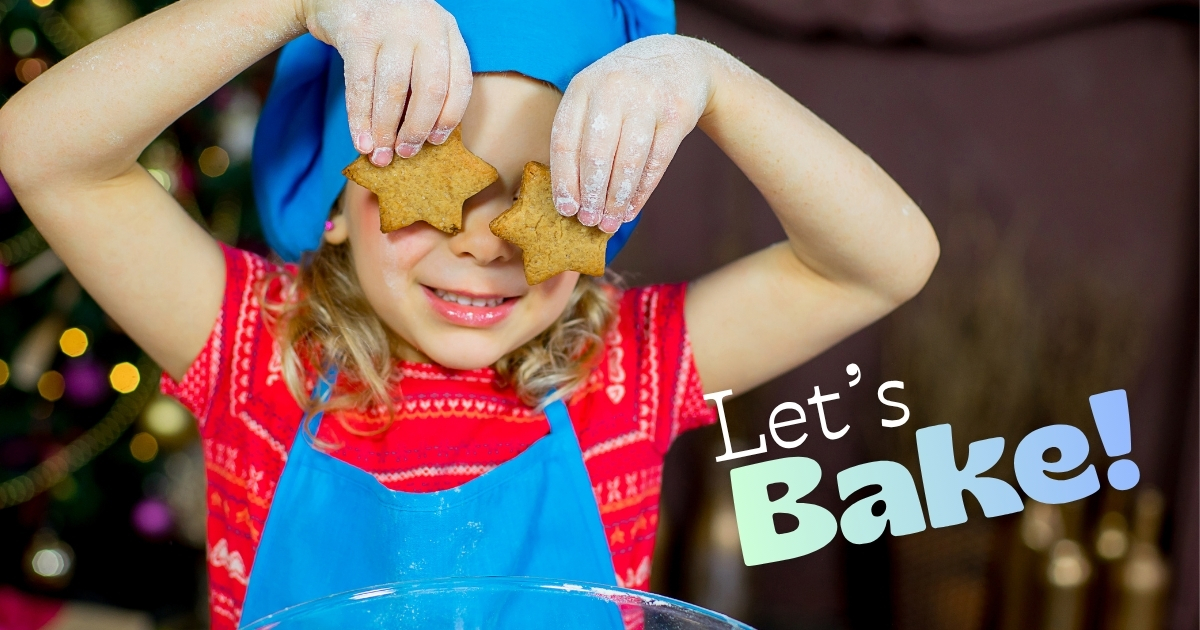By transforming your kitchen into a dynamic classroom, you can teach chemistry in a fun and engaging way. Edible experiments for kids not only make learning enjoyable but also instill a lifelong love for science. Exploring the wonders of chemistry through everyday kitchen activities can turn your home into a lively laboratory. Edible experiments demonstrate fundamental chemistry concepts in an engaging and tasty way, making learning an enjoyable experience for children of all ages.
There are countless edible experiments that highlight core chemistry principles. For instance, making butter from cream teaches emulsification, a process where fat droplets are dispersed in water. Similarly, brewing homemade ginger beer introduces children to fermentation, the chemical breakdown of substances by bacteria, yeasts, or other microorganisms—a concept central to understanding biochemistry. Linking edible experiments directly to chemistry makes learning more tangible and memorable. It allows children to grasp how scientific principles operate in the world around them, nurturing their curiosity and critical thinking skills. By delving into chemistry through hands-on kitchen experiments, you can provide a rich educational experience that stimulates your child’s interest in science.
A Parent’s Guide To Making Chemistry Fun
Infusing chemistry into everyday activities doesn’t have to be challenging. With a parent’s guide to chemistry, you can transform your kitchen into a vibrant learning environment that brings scientific concepts to life in fun and engaging ways. The key is to select age-appropriate experiments that align with your science curriculum and pique your child’s curiosity. For younger children, straightforward activities like making fizzy lemonade or mixing vinegar and baking soda can introduce basic chemical reactions in a safe and enjoyable manner.
Older kids might be ready for more complex projects, such as crystallizing sugar to make rock candy or exploring the effects of acids and bases through colorful pH testing. To make learning truly enjoyable, incorporate storytelling and explanations into your experiments. For example, when making Roman bread, you can discuss the role of yeast in fermentation and the chemical reactions that cause the dough to rise. Explain how yeast, a living organism, consumes sugars and produces carbon dioxide gas, which gets trapped in the dough and makes it expand. This approach not only makes the experiment more interesting but also helps children understand the practical applications of chemistry in everyday life.
Getting Creative
Getting creative with your experiments can further enhance the learning experience. Tie them into various chemistry themes and concepts to provide a broader understanding of the subject. For instance, when making rock candy, you can delve into lessons about saturation and sugar crystallization. Describe how heating water allows it to dissolve more sugar than at room temperature, creating a supersaturated solution. As the solution cools, sugar molecules start to come out of the solution and form crystals. This visual and hands-on approach can demystify complex ideas and make them more accessible.
Crafting homemade ice cream is another fantastic opportunity to explore chemical principles. Discuss the concept of freezing points and how adding salt to ice lowers the temperature, allowing the mixture to freeze more efficiently. Explain the science behind why stirring the ice cream mixture helps prevent large ice crystals from forming, resulting in a smoother texture. By linking these scientific explanations to a delicious treat, you create a memorable and enjoyable learning experience.
Safety should always be a priority when conducting experiments at home. Ensure that all activities are supervised and that children understand the importance of handling materials carefully. Use this as an opportunity to teach safety protocols, such as wearing protective eyewear, using gloves when necessary, and understanding the proper way to measure and mix ingredients. These lessons in safety are just as important as the scientific concepts themselves and help instill a sense of responsibility in young learners.
Relate Experiments To Real-World Scenarios
Another way to make chemistry engaging is to relate experiments to real-world scenarios or historical contexts. For example, while discussing the chemistry of cooking, you can talk about how ancient civilizations used natural resources to create dyes and pigments. Conduct a simple experiment with natural dyes from fruits and vegetables to show how chemistry has been used throughout history for artistic and practical purposes. This contextualizes the science and demonstrates its relevance across different fields and eras. Encouraging curiosity and questions during experiments is crucial. Allow your child to hypothesize about what might happen before starting an experiment and discuss the results afterward. This scientific method approach fosters critical thinking and problem-solving skills. Celebrate successful outcomes and use unexpected results as learning opportunities to explore what went differently than expected.
Making chemistry fun and accessible at home is all about creativity, engagement, and contextual learning. By transforming your kitchen into a dynamic laboratory, you can turn everyday activities into thrilling educational adventures. Whether through simple experiments or more intricate projects, the goal is to spark curiosity and deepen understanding. With thoughtful preparation and a willingness to explore together, you can cultivate a love for chemistry that extends beyond the classroom and into everyday life, fostering a lifelong passion for science and discovery.
Homeschool Lessons Chemistry And Beyond
Edible experiments offer a wealth of educational opportunities that extend far beyond the realm of chemistry. They can introduce children to a range of scientific principles, including biology and physics, while also imparting practical life skills. For instance, making yogurt at home is a fantastic way to explore the concept of fermentation and observe the role of bacteria in food production. As you mix milk with a yogurt starter, explain how beneficial bacteria convert lactose into lactic acid, thickening the milk and giving yogurt its distinctive tangy flavor. This experiment not only provides a lesson in microbiology but also opens up discussions about the importance of probiotics and gut health. Baking a cake is another wonderful edible experiment that showcases chemical reactions in action.
When you combine ingredients such as baking powder or baking soda with an acidic component like lemon juice or buttermilk, you initiate a chemical reaction that produces carbon dioxide gas. This gas creates bubbles in the batter, causing it to rise and become fluffy. Beyond chemistry, baking also emphasizes the importance of precise measurements and following instructions accurately—skills that are crucial in both scientific experiments and everyday tasks.
To ensure that your homeschool lessons are effective, it’s important to adapt the experiments to different age groups and learning levels. Younger children often require more guidance and simpler explanations. For them, you might focus on basic concepts like mixing colors or observing changes in texture and state. For example, making ice cream in a bag can be a fun and straightforward project that demonstrates the freezing process while yielding a tasty treat. Older kids, on the other hand, can handle more complex concepts and independent experimentation. They might delve into the science behind molecular gastronomy or explore the chemistry involved in creating different flavors and textures in food.
Tailoring the experiments to your children’s needs ensures they remain engaged and challenged, fostering a love for science. It’s helpful to encourage younger children to ask questions and make predictions about what will happen during an experiment. This curiosity-driven approach makes learning interactive and exciting. For older students, consider incorporating elements of the scientific method, such as forming hypotheses, conducting trials, and analyzing results. This structured approach helps develop critical thinking and problem-solving skills, which are essential for scientific inquiry.
In addition to teaching scientific principles, edible experiments develop essential life skills. Following a recipe teaches children how to read and interpret instructions, measure ingredients accurately, and manage their time effectively. These skills are valuable not only in the kitchen but also in various aspects of daily life. For instance, understanding measurements and conversions can enhance mathematical abilities, while managing time efficiently can improve organizational skills. By combining academic learning with practical skills, you create a holistic educational experience that prepares your children for the future. Moreover, cooking and experimenting with food can instill a sense of responsibility and independence in children. As they take charge of different aspects of the cooking process, from gathering ingredients to cleaning up afterward, they learn to be self-sufficient and mindful of their environment. This hands-on experience in the kitchen also promotes teamwork and communication, especially when multiple family members participate in a cooking project together.
Focusing On Chemistry
By focusing on chemistry, you can create rich, interdisciplinary lessons that captivate your child’s interest. Whether you’re teaching basic chemistry principles or exploring chemical reactions in everyday recipes, these experiments provide a fun and educational experience for the whole family. They make science tangible and accessible, helping children see the connections between what they learn and the world around them. We encourage you to embrace the joy of hands-on learning and experiment with different ways to incorporate chemistry into your homeschooling. Share your experiences with us and join our community of science enthusiasts. Together, we can inspire the next generation of young scientists and make learning a delightful adventure.
By transforming your kitchen into a dynamic classroom, you can show your children how to teach chemistry in a fun and engaging way. Edible experiments for kids not only make learning enjoyable but also instill a lifelong love for science. Start your culinary adventure today and discover the magic of chemistry in the kitchen!




